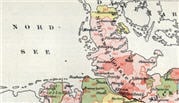Source Information

About Weimar, Germany, Deaths, 1876-1950
About this collection
This collection contains death records from Weimar, Thuringia. It covers the years from 1876 up to and including 1950. It also includes some records from Tiefurt, Oberweimar, Ehringsdorf and Kleinkromsdorf which were formerly independent neighboring communities. Not all years may be covered for these communities. At the beginning of each year's register, you may find handwritten notes by the registrars that provide additional information. The historical designation, "Weimar Republic," for Germany, arose from the German national assembly held there in 1919. Grand Duchess Anna Amalia was a patron of writers, musicians and artists whose lives and works became the foundation of the cultural movement known as Weimar Classicism and resulted in numerous significant cultural institutions. The Goethe-Schiller Monument in front of the German National Theatre celebrates two of the best-known representatives of the movement. Starting in 1813 and during the time period of this collection, Heiligenstadt belonged to the Province of Saxony in the Kingdom of Prussia. From 1918 to 1933 it was part of the Free State of Prussia under the Weimar Republic. With the end of Nazi rule in 1945, Weimar came under the Soviet Zone of Occupation and in 1949 became part of the German Democratic Republic.
Beginning on January 1, 1876, birth, marriage and death records in the former German Empire were created by local registry offices. The collected records are arranged chronologically and usually bound together in the form of yearbooks. These are collectively referred to as "civil registers." Complementary alphabetical directories of names may also have been created. While churches continued to keep traditional records, the State also mandated that the personal or marital status of the entire population be recorded.
What you can find in the records
Death records were created using preprinted forms that were filled in by hand by the registrar. Later, the forms were completed by typewriter. In each record the date of death usually differs from the date it was registered. Depending on the individual form or on the formulations used by the registrar, you may find:
- Sequential or Certificate Number
- Registration Date
- Informant: Occupation, Given Names, Last Name, Maiden Name, Residence, Address
- Deceased: Occupation, Given Names, Last Name, Maiden Name, Age/Birthdate, Denomination, Residence/Address, Birthplace, Marital Status, Spouse/Parents, Place/Date of Death, Time of Death. After 1938, the records may also include a Cause of Death and cross references to corresponding marriage registers.
- Registrars' Signatures
Comprehensive name directories (Namensverzeichnis) were bound in separate volumes. These provide a cross-reference to the Certificate Number in the full record. The directories are ordered by the first letter of the last name and grouped by year. The name directories are not searchable through the search form.
More about using this collection
Each record comprises one page. Additional events from the life of the deceased were sometimes recorded later on in the margins. These notes, sometimes referred to as "narration," can contain very useful information but they have not been indexed. As a result, information from the notes will not found via the search form. The “Informant” was usually a relative of the deceased. In later years death information was often submitted by hospital administrators or funeral directors. War casualties and victims were taken from military records. Those from August 1939 to January 1946 were made available by the "German Office for the Notification of Next-of-Kin of Members of the Former German Armed Forces who were Killed in Action" (WASt) in Berlin. Under "Browse this collection,” select the Record Type, either Sterberegister (Death Records) or Namensverzeichnis (Name Directories), and then the Year Range for the register desired.
 Need help with the German language? Find resources in our German Research Center.
Need help with the German language? Find resources in our German Research Center.